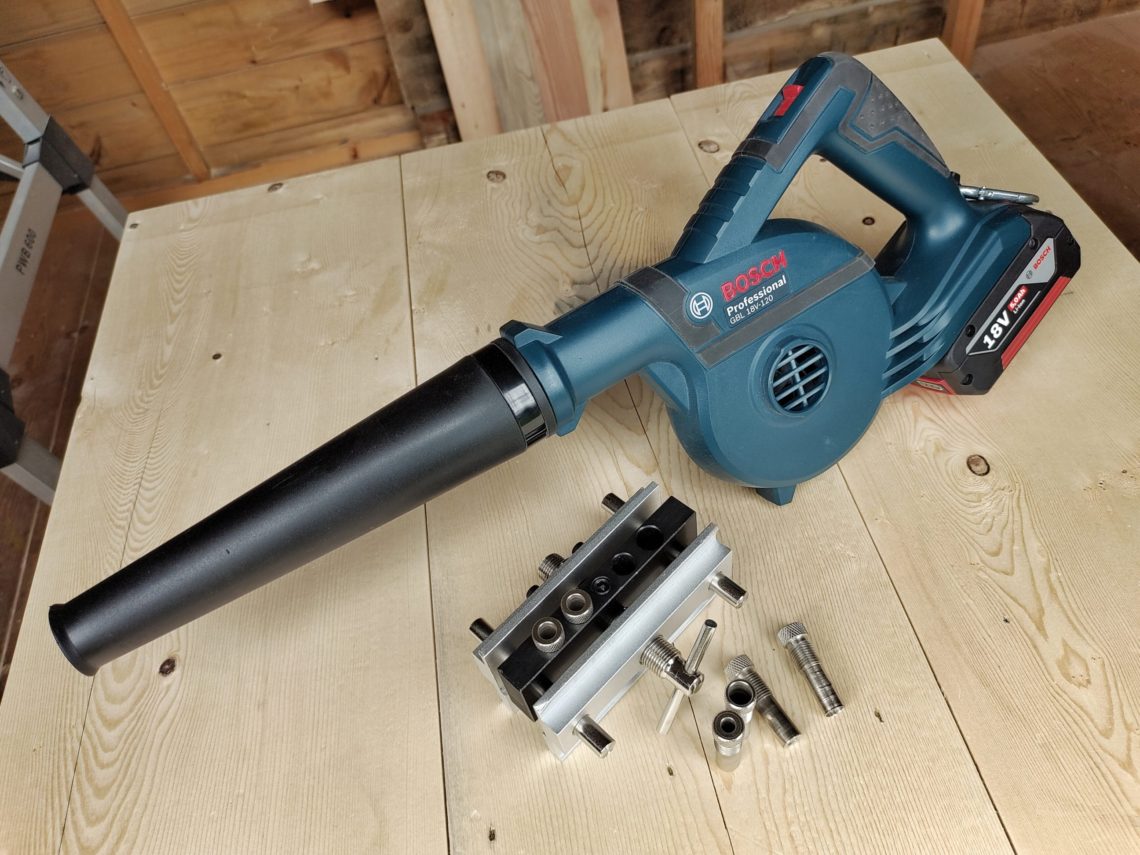This year, 2021, is about going cordless, at least for me. Many tools and appliances in my household have been changed from noisy and corded to quiet cordless ones. But the noise wasn’t the main reason I did some upgrades. Portability and ease of use, which often means no preparation before the job. In the past, time after time, I didn’t use a tool at all and skipped the task just because I saw all the cable work in my head, plugin in, changing sockets, being careful not to go over the cable etc. Many tasks started and immediately finished as a vision only, and laziness took over. For example, hoovering, lawn mowing and power washing were done less frequently than now. A corded shop blower is slightly more powerful and completely fine to use in a workshop, but a cordless one, with an extension, is perfect for garden work. The presented dowelling jig is somehow connected to cordless tools too. It’s just easier to use it with a lightweight, cordless drill rather than a heavier, operated with both hands, corded monster.
Bosch Professional GBL 18V-120 blower is a battery-powered tool that helps me clean my shed, tools and garden. If used with a large battery, it can go on for a long period of time. I like the nozzles it came with; an extension, which is good for the garden, a drill hole nozzle, which can reach hard-to-reach spots, and a dust collector, which can be attached to the last one if needed. There is also a standard nozzle, which, unlike all the blowers I had in the past, stays firmly in place and doesn’t fly away during use. This tool is well built, as you might expect from Bosch, ergonomic and balanced. It can be held by its motor too, which sometimes comes in handy if I need to do some quirky acrobatics like blowing away dust from my back.
Self-centering dowel jig, in that particular design, is the only dowelling jig I use. I’ve had many of them in the past, but this one works the best for me. It needs to be properly adjusted, though. It may look like it’s ready to go straight from the box, but it’s not. There are 3 screws at the back, and all 3 need to be adjusted. First, the steel block in the middle has to be centred, and this can be done with the biggest nut at the back, the one in the centre. That feature shows, that the jig can be set for offset joints, but in my opinion, this is just unnecessary. The second adjustment is made with 2 screws holding the nut. The problem with this mechanism could be avoided if the nut sat tightly in its socket. The socket, however, is slightly bigger and absolutely for no reason let the nut wiggle. Made in a hurry, I don’t know. All these cheap jigs have the same issue. The jaws have to be parallel, to the steel block and to each other, at all times. Luckily, I found the way to adjust the jig – perfectly parallel jaws can be set with these 2 small screws, simple as that. But let’s talk about the good things about this tool. It has the proper spacing between bushings, if I use 2 of them, of the same size, at the same time, I can make a strong and accurate joint. Some other jigs come with too much spacing between holes, and they’re not right for me. This one, however, is perfect for drilling a pair of holes in one go or can be even used to drill multiple holes if used with a positioning pin. There is more – each hole has a clearly scribed centre line on the side of the block, they’re visible through two windows. Sometimes I use the edge of the jig as a reference point to be aligned with the edge of the workpiece. This is one of these tools that has to be understood and fixed prior to use. Low price recompensates all those imperfections in the build.

